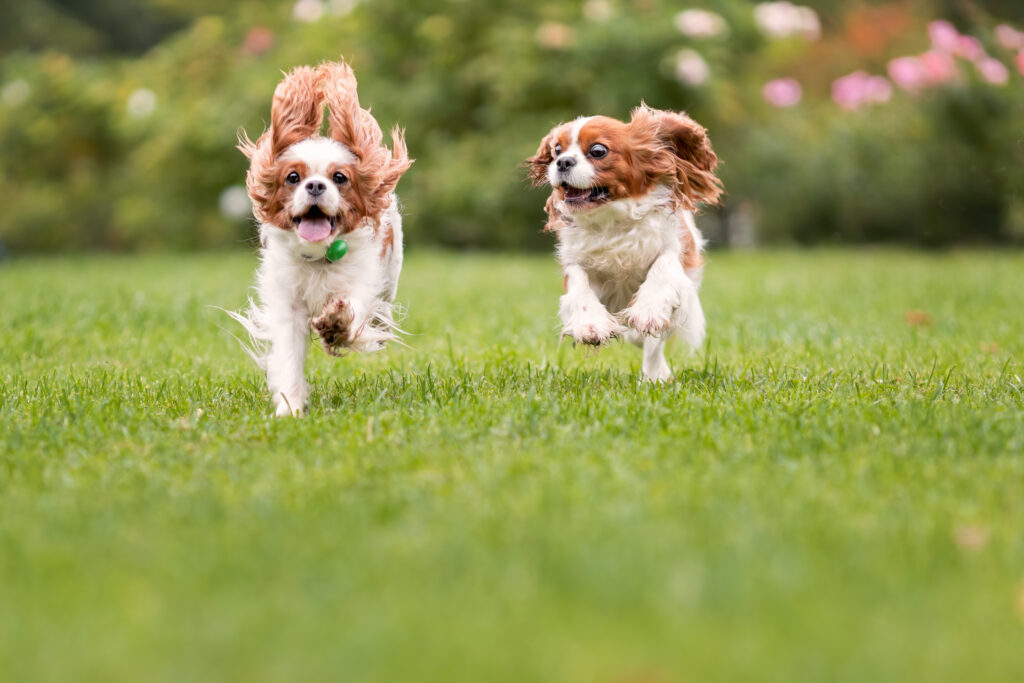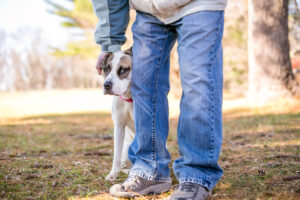If you’re a responsible dog owner, you probably know that your dog needs some exercise. But exactly how much exercise is “some” exercise?
Unsurprisingly, there isn’t a one-size-fits-all answer to the question of how much exercise your dog needs. The amount of exercise will differ based upon a number of factors, including breed characteristics, their level of fitness, their interests and their age.
In this article, we’ll help you decipher how much exercise your dog needs. Remember, if you have any questions or concerns about your dog’s health, wellbeing or the physical activity they are undertaking, consult your veterinarian.
Why physical exercise is important
It should go without saying that dogs, as the ancestors of wolves (who can cover anywhere from 30 to 50 miles per day), do need some exercise to maintain their physical health. The specific benefits of exercise are:
- Reduces obesity. If you are guilty of overfeeding your dog, and combine it with their poor exercise regimen, it stands to reason that they will gain weight. This can lead to significant health problems later in your dog’s life.
- Improves physical health. The positive impact of physical exercise isn’t just that it prevents weight gain; exercise can also develop strong joints and bones, and improve heart health.
- Decreases destructive behavior. If your dog is bored and looking for something to do around your home, the likelihood is that they may chew, bite or destroy anything they can lay their teeth on. Exercise provides them with a physical and mental outlet for their energy – this reduces the potential for destructive behavior.
- Improves human-canine bond. Unless you put them on a doggy treadmill, most of your dog’s physical activity will be alongside you, their owner. These shared experiences – whether it’s a walk in your local park, or participating in a dog sport like agility – help to improve the bond and trust between the two of you.
Why the amount of exercise depends on your dog
If you were devising an exercise plan for a dog, you would come up with a different plan for an eight-year-old King Charles Cavalier Spaniel living in the heart of Arizona, than you would for a three-year-old Siberian Husky training for a sled dog race in Alaska.
The reasons are relatively straightforward. While every dog needs some level of exercise, the exact amount they will require can be influenced by the following factors:
Breed Characteristics
Think back to the example above. A Siberian Husky is a breed that has historically been bred to travel long distances. More than most other breeds, it requires a significant amount of exercise to maintain its physical health and avoid behavioral problems.
Typically, medium-to-large breeds in the Working category will need more vigorous exercise to keep them in tip-top shape. Conversely, smaller breeds (such as those in the Toy category) cannot cover such large distances and are unlikely to need the same level of exercise. If you’re unsure, research your dog’s breed characteristics to understand how their heritage may influence their exercise needs.

Weight & Fitness Level
Perhaps your dog is more on the inactive side of things; maybe your vet has told you it wouldn’t hurt for them to lose a little weight. Regardless, you should understand your dog’s fitness and weight capabilities (and limitations) before embarking on a plan of exercise with them.
Pushing your dog too hard, too quickly can lead to injury. The best way to bring your dog up to the desired level of fitness is through a gradual plan. Slowly start to increase the duration of walks, and build up the complexity of the terrain and inclines over time.
Puppies
Puppies have very specific exercise requirements, and it merits plenty of consideration as too much – or too little – exercise can harm their development.
There is significant debate in the veterinarian community about exactly how much exercise puppies need. In general, when puppies are very young, it is better to have a series of short walks (between 5-15 minutes per walk) that allow your puppy to explore the world and expend some energy. As they grow older, the length of walks can increase. Do not partake in activities like agility when your puppy is very young, as this can have an adverse effect on their joints later in life.
Older Dogs
As dogs age, they start to slow down. Their bodies start to become more susceptible to injury, and they simply begin to lose the speed, strength and stamina they had when they were younger.
This has an obvious impact on the exercise plans for your senior dog. Gentle walks are very beneficial as they can reduce arthritis and other joint problems, but don’t overextend them past their capabilities. Your older dog needs some exercise, but they’ve also earned some rest in their advancing years!
Recovering or Rehabbing Dogs
In a similar fashion to older dogs, any pup recovering from surgery or injury should be brought back to exercise very gently. Failing to do this can result in reaggravating the injury.

Training Goals
Some owners acquire dogs with a specific purpose in mind. For example, a Search and Rescue dog will need stamina to cover large swathes of land and agility to navigate difficult terrain. If you have a specific goal in mind for your dog, and their physical abilities will be vital to the success of that initiative, then their exercise plan will need to be structured to help achieve those goals.
What counts as exercise?
The word ‘exercise’ is a pretty broad term, but generally, it could refer to any of the following activities:
- Walking or hiking
- Running
- Obedience work, such as recall
- Swimming or dock diving
- Playing fetch
- Playing with a tug
- Dog sports, such as agility
- Learning a new skill, such as Search and Rescue or scent work
In summary
While it is a question without an easily definable answer, there’s little doubt that thinking about how much exercise your dog needs is one of the most important considerations for a dog owner.
Making exercise an enjoyable pastime for you and your dog is likely to increase your motivation to get out there and engage in it. There is no shortage of varied activities which are considered as exercise, so be sure to take a moment and think about the plan for your pup.
Related posts

Train Your Dog To Lie Down [Step-by-Step]
Teaching your dog to lie down is a simple way to bring some control to chaotic situations.

How Many Training Sessions Does A Dog Need?
There are several factors that can influence how many training sessions your dog might need – find out about them in this article.

How To Help A Timid And Shy Dog
If you suspect your dog is shy or timid, this article is designed to help you identify the signs and build their confidence.


You must be logged in to post a comment.